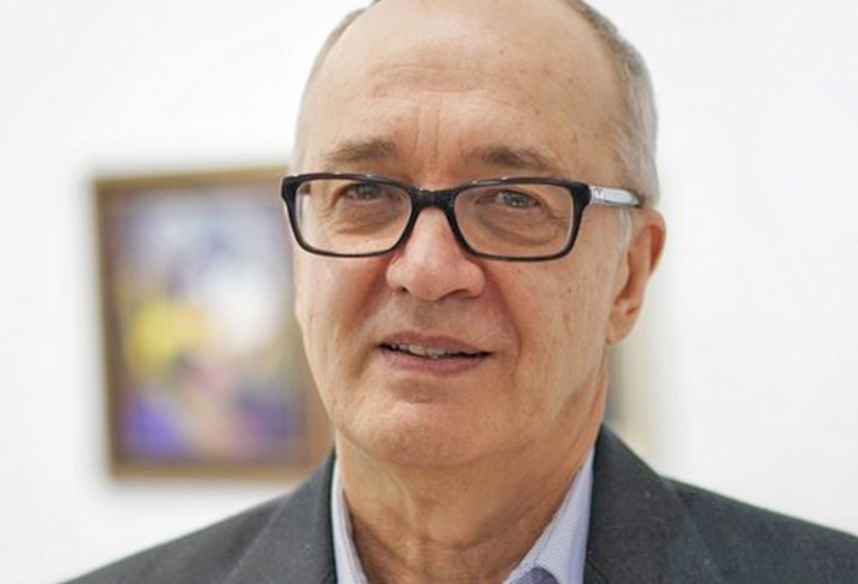In the 1960s and 1970s, the USSR began to fear an alliance between Ukrainians and Jews. Therefore, the authorities published works aimed at causing a rift between them—Myroslav Shkandrij

We are continuing our conversation about the image of the Jew and the depictions of the Jewish community in twentieth-century Ukrainian literature.
Our guest on the show is Myroslav Shkandrij, a literary historian, art specialist, and professor at the University of Manitoba (Canada). He is the author of Jews in Ukrainian Literature: Representation and Identity.
Vasyl Shandro: What was the impact of the 1920s and 1930s on Ukrainian and Jewish literatures in the Soviet Union?
Myroslav Shkandrij: This was a very dynamic and tragic period both for Ukrainians and for Jews. The Ukrainian National Republic (UNR) pursued a policy of rapprochement with the Jewish community, which was fairly successful. Initially, nearly the entire Jewish community supported the Central Rada, but this ended in 1919 when anarchy began, and the Red Army arrived from Russia. One-third of the urban population in Ukraine was Ukrainian, one-third Russian or Polish, and one-third was Jewish. In other words, Ukrainians did not hold sway in cities.
The Kultur-Lige operated in Ukraine; this was the largest Jewish organization with branches throughout the country, along with a theater, school, and university. At the same time, there were attempts to create Ukrainian modernism. If we look closely at what the Boichukisty were doing when the Kultur-Lige existed, then their basic sense of art was remarkably similar.
This was a positive period that subsequently created momentum for Ukrainization in the 1920s when Jews and Ukrainians became allies once again.
Vasyl Shandro: Can one say that during this interwar period, a new image of the Jew emerged, which was unlike that of the stereotypical Jew of the nineteenth century?
Myroslav Shkandrij: The Jewish voice—Jewish writers who wrote in the Ukrainian language—appeared in Ukrainian literature. In the 1920s, these were Ivan Kulyk, Raisa Troianker, and Leonid Pervomayskiy. Here we have “young Ukraine”—Jews who are writing like Ukrainians in the Ukrainian language about the new Ukraine that is being created. These were people who were enamored of the Ukrainian language, literature, and culture.
Vasyl Shandro: If we talk about literature after the Second World War and émigré literature, were these different ideological camps with differing attitudes to the Jewish question?
Myroslav Shkandrij: Even in the Soviet Union, there were people who were writing interesting works. Mykola Bazhan wrote Oleksa Dovbush during the war and Babyn Yar in 1945. There was also Ivan Kachur, who wrote the play Ivan Bohun, which portrays a Jew who is fighting together with the Cossacks and Khmelnytsky.
In the 1960s and 1970s, the Soviet Union began to fear the alliance between Ukrainians and Jews. The authorities began to publish works that were aimed at dividing these communities. Soviet antisemitism existed. Judaism without Embellishment, published in 1963, slandered Jews, as well as the Jewish culture and faith.
Vasyl Shandro: What basic things have changed in literature during the period of Ukrainian independence?
Myroslav Shkandrij: People began to think and write about the Holocaust, at first rather cautiously. New facts began to emerge, and research was launched. Maryna Hrymych’s works about Jews who survived the Second World War and the Holocaust began to appear.
Ukrainians are trying to write about their own problems, about what they have suffered, without taking into account that Jews suffered as well. There is a need to create novels or plays that interweave the threads of these various fates. They are trying to show that both the former and the latter had their lives and to connect this. That is quite difficult to do, but such works are starting to appear today.
Vasyl Shandro: In your opinion, which works are a good illustration of some aspect of Ukrainian-Jewish relations and are constructive?
Myroslav Shkandrij: I would mention two works. There was a writer named Dokia Humenna, who kept a diary during the Second World War. Later, her memoirs were published in the West, in New York, in the form of a novel. This is the novel Khreshchatyi iar [The Cross-shaped Ravine). I would recommend that you read it; there are a lot of interesting things in it. It shows how the psychology of local people changed.
The second is Leonid Mosendz’s Ostannii prorok [The Last Prophet]. The book is fascinating in that it is about Israel, about the revolt of the Zealots during the period of the Roman Empire and the Jews’ desire to gain independence for their country, the struggle against the occupier. There you will find Banderites, pro-Soviet figures, and partisans. He was able to find such an angle, such an approach, that explains the situation differently. I deeply regret that these works are not well known in your country.
This program is created with the support of Ukrainian Jewish Encounter (UJE), a Canadian charitable non-profit organization.
Originally appeared in Ukrainian (Hromadske Radio podcast) here.
Translated from the Ukrainian by Marta D. Olynyk.
Edited by Peter Bejger.
NOTE: UJE does not necessarily endorse opinions expressed in articles and other materials published on its website and social media pages. Such materials are posted to promote discussion related to Ukrainian-Jewish interactions and relations. The website and social media pages will be places of information that reflect varied viewpoints.



















